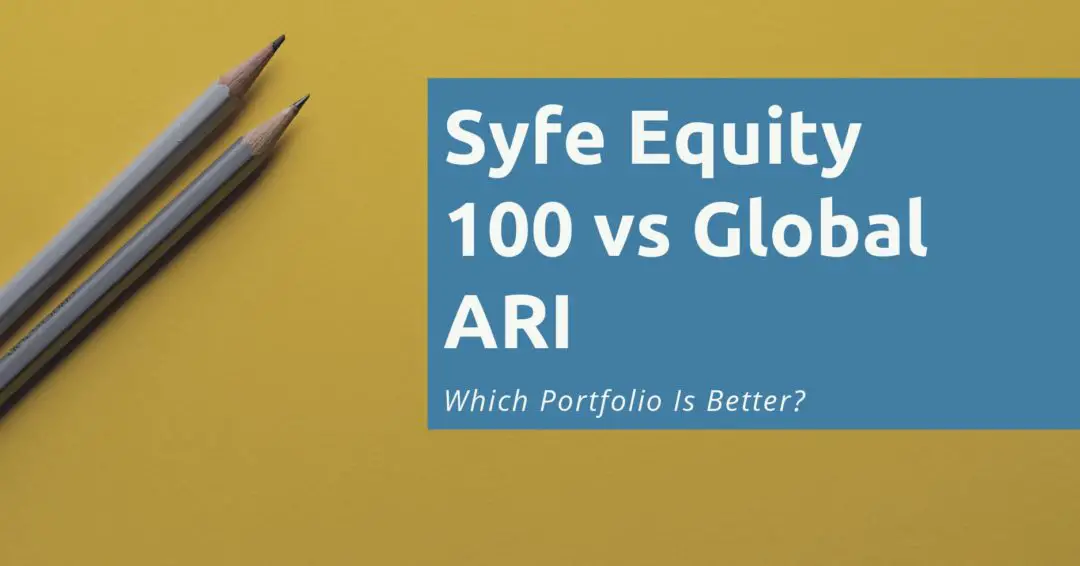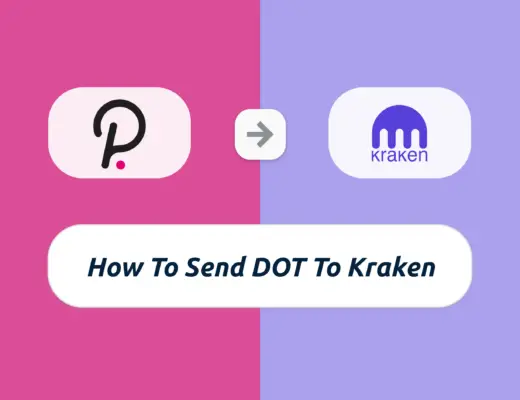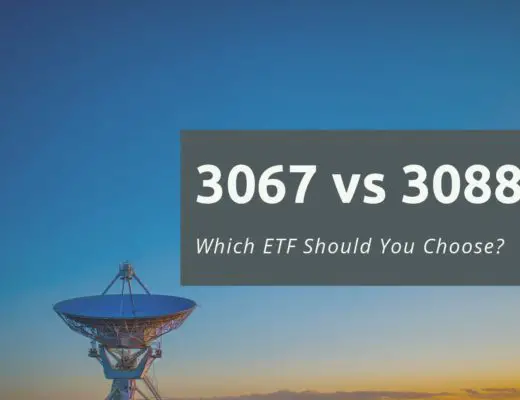Last updated on June 6th, 2021
When you’ve decided to create a portfolio with Syfe, you may notice that there are quite a few options!
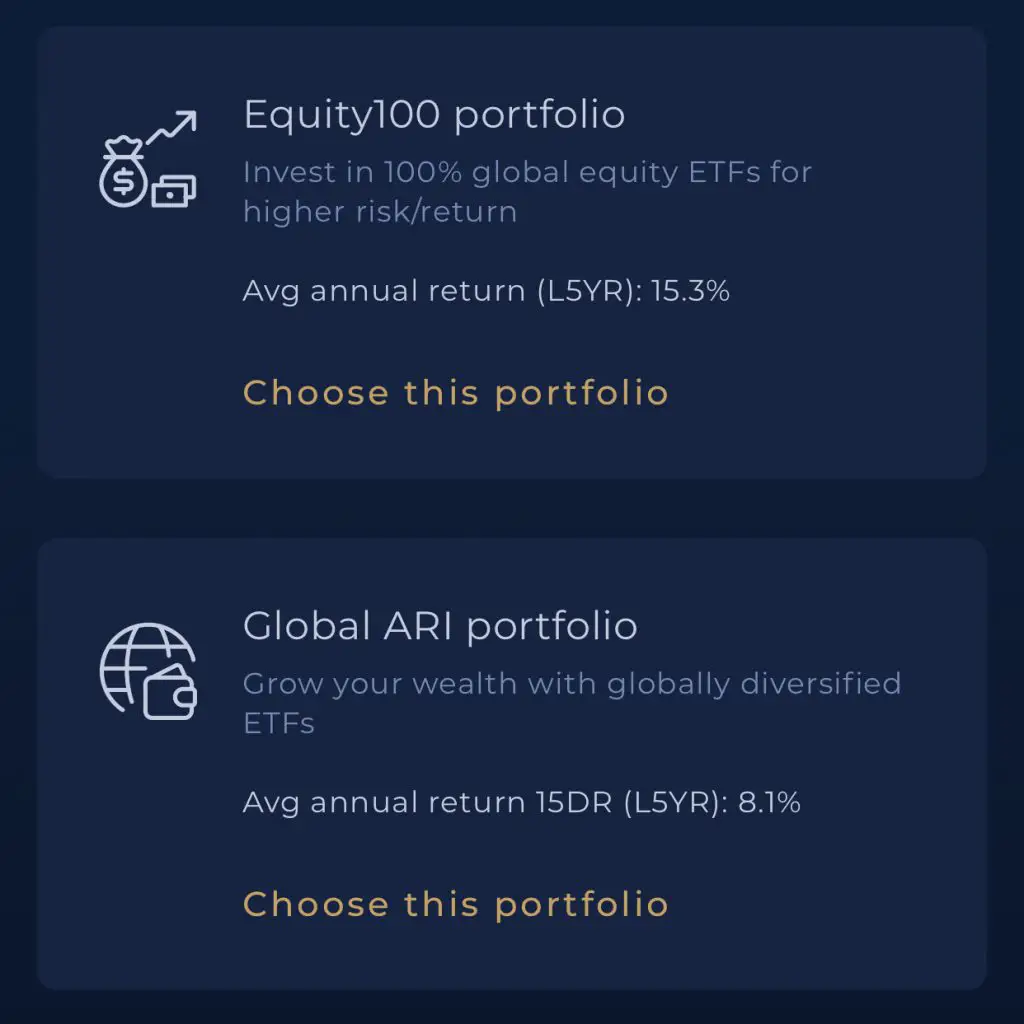
So how does Syfe’s Equity 100 portfolio compare with the Global ARI?
Contents
The difference between Syfe Equity 100 and Global ARI
Syfe Equity 100 invests in ETFs that are 100% concentrated in equities. Meanwhile, Global ARI invests in ETFs from 3 different asset classes: equities, bonds and commodities. This makes the Global ARI more diversified compared to Equity 100.
Here is a head-to-head comparison of these 2 portfolios:
Investing Strategy
Both of Syfe’s portfolios use different strategies to invest your funds:
Syfe Equity 100 uses a Smart Beta strategy
Syfe’s Equity 100 focuses on building a smart beta portfolio for you. This is sometimes referred to as factor-based investing.
Syfe aims to provide high returns by concentrating on a few factors. These factors are chosen to ensure that your portfolio will outperform a certain index. Currently, Syfe has selected these 3 factors:
- Growth
- Large-cap
- Low-volatility
Syfe will then select the best ETFs that are weighted towards these factors.
For example, the current portfolio is heavily weighted in the QQQ ETF. This will help to tilt the portfolio towards the growth and large cap factors. Meanwhile, the low-volatility factor is achieved by investing in multiple sector ETFs.
This is different from the original Fama-French 3-factor model, which focused on:
- Size of firms
- Book-to-market values
- Excess return on the market
Syfe will dynamically select the best factors for you
In the long run, the factors that give the best returns in the future may no longer be these 3 factors. As such, Syfe has a dynamic factor selection to choose the best factors in the current economic climate.
Your portfolio will be over or under-weighted in certain factors to produce the highest risk-adjusted returns.
This helps to ensure that your portfolio will perform in any market condition!
Syfe’s Global ARI uses their ARI algorithm
You are able to use Syfe’s Automated Risk-managed Investment (ARI) strategy in your Global ARI portfolio.
This strategy is a combination of 2 different approaches:
The aim of this strategy is to manage your risks, rather than focus on investment returns. This is because the economic conditions we experience are constantly changing.
As such, Syfe wants to use a risk-based approach to determine your asset allocation.
The funds that you invest with the Global ARI portfolio are allocated into 3 different asset classes:
- Equities
- Bonds
- Gold
Here is how Syfe’s ARI strategy fared against the other 2 portfolios.
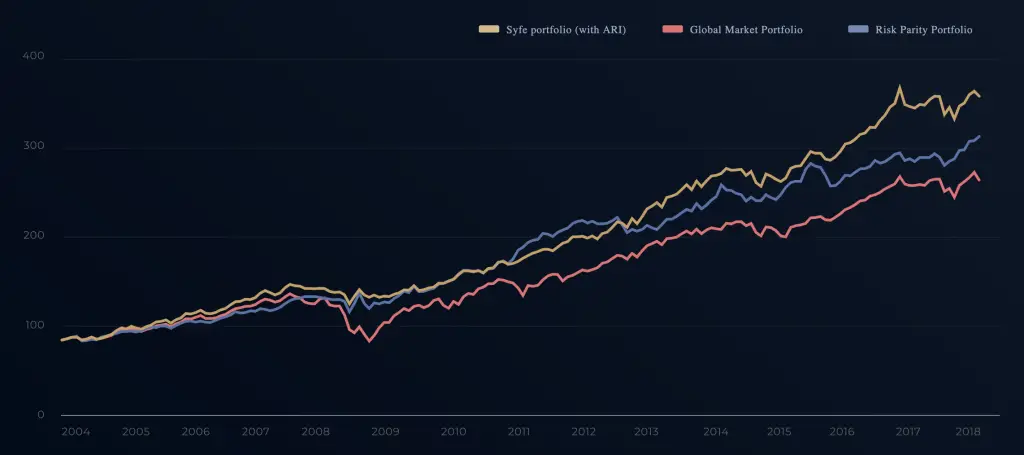
Syfe’s ARI algorithm allocates your assets based on your downside risk
Syfe uses ‘Downside Risk’ to measure the amount of risk that you’re willing to take.
In 39 out of every 40 years, a Syfe portfolio in a 15% Downside Risk category (at 95% MTL) will not lose more than 15% in a given year.
Syfe
The Downside Risk ranges from 5%-25%.
Based on the Downside Risk that you choose, Syfe will allocate your assets into the 3 different asset classes.
If you choose the highest risk profile (25%), your funds will be heavily weighted in equities.
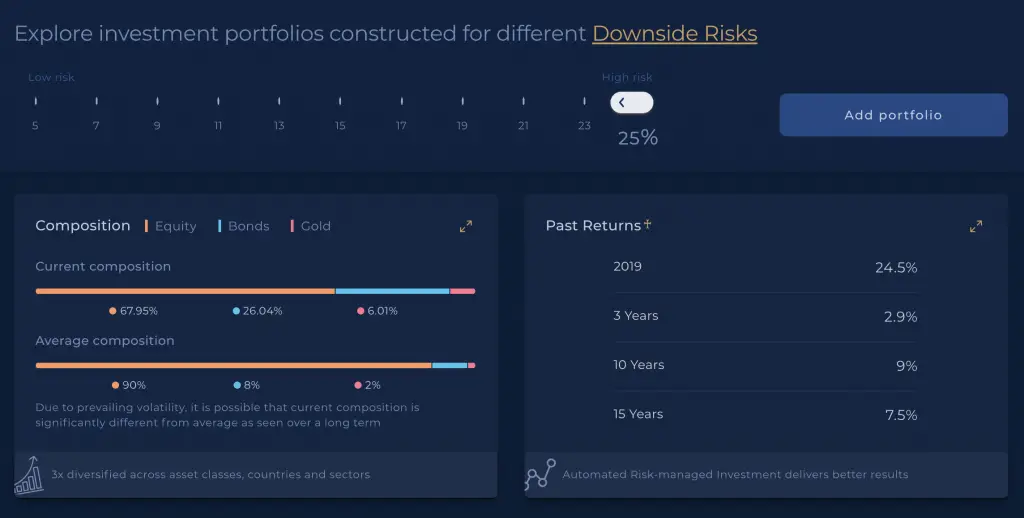
Meanwhile, the lowest risk profile (5%) will be heavily weighted in bonds.
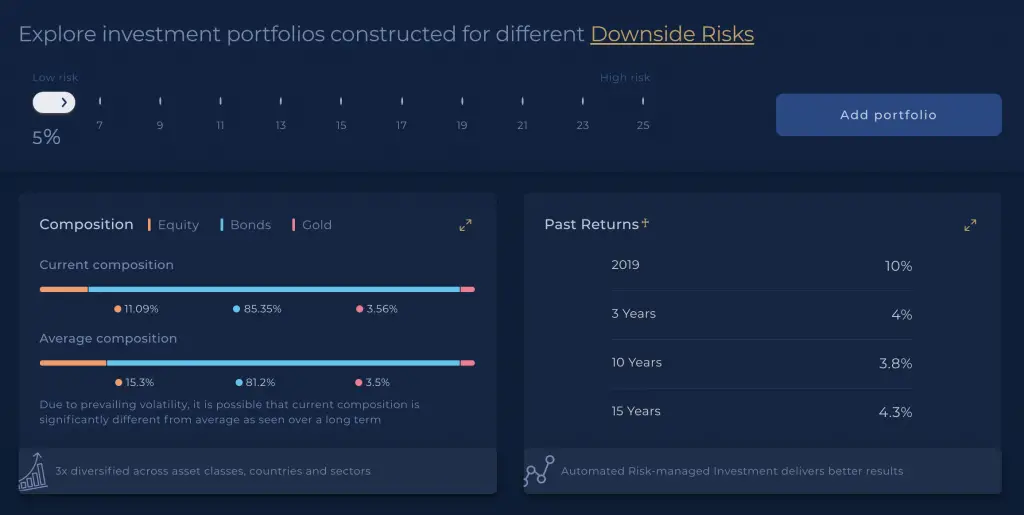
There are 11 different portfolios you can choose from, based on the Downside Risk you’re willing to take.
As such, you’ll need to decide on the Downside Risk that best suits your risk profile!
Type of Assets
Both of these portfolios invest in different types of assets.
Equity 100 invests in 100% equities
In your Equity 100 portfolio, you will invest in a portfolio of equity ETFs. Here are the 12 equity ETFs that Syfe currently invests in:
| ETF | ETF Name |
|---|---|
| QQQ | Invesco QQQ Trust Series 1 |
| CSPX | iShares Core S&P 500 UCITS ETF USD (Acc) |
| EFA | iShares MSCI EAFE ETF |
| XLP | Consumer Staples Select Sector SPDR Fund |
| XLV | Health Care Select Sector SPDR Fund |
| XLU | Utilities Select Sector SPDR Fund |
| IEMG | iShares Core MSCI Emerging Markets ETF |
| XLK | Technology Select Sector SPDR Fund |
| XLY | Consumer Discretionary Select Sector SPDR Fund |
| XLB | Materials Select Sector SPDR Fund |
| IJH | iShares Core S&P Mid-Cap ETF |
| IJR | iShares Core S&P Small-Cap ETF |
Equity 100 invests in a variety of equity ETFs. Moreover, they are diversified across a wide range of sectors and countries.
Most of these ETFs are listed on the NYSE. The only exception is the CSPX ETF which is an Irish-domiciled S&P 500 ETF.
The Global ARI portfolio invests in equities, bonds and commodities
In the case of the Global ARI portfolio, your funds will be invested in 3 different asset classes:
- Equities
- Bonds
- Commodities
Here are the 19 ETFs that Syfe invests in your funds with the Global ARI portfolio:
| ETF | ETF Name | Asset Class |
|---|---|---|
| TLT | iShares 20 Plus Year Treasury Bond ETF | Bond |
| SPY | SPDR S&P 500 ETF Trust | Equity |
| XLP | Consumer Staples Select Sector SPDR Fund | Equity |
| IEF | iShares 7-10 Year Treasury Bond ETF | Bond |
| GLD | SPDR Gold Trust | Commodity |
| EFA | iShares MSCI EAFE ETF | Equity |
| XLV | Health Care Select Sector SPDR Fund | Equity |
| RSP | Invesco S&P 500 Equal Weight ETF | Equity |
| XLK | Technology Select Sector SPDR Fund | Equity |
| XLU | Utilities Select Sector SPDR Fund | Equity |
| XLY | Consumer Discretionary Select Sector SPDR Fund | Equity |
| XLB | Materials Select Sector SPDR Fund | Equity |
| XLI | Industrial Select Sector SPDR Fund | Equity |
| XLF | Financial Select Sector SPDR Fund | Equity |
| AGG | iShares Core US Aggregate Bond ETF | Bond |
| XLE | Energy Select Sector SPDR Fund | Equity |
| IEMG | iShares Core MSCI Emerging Markets ETF | Equity |
| IJH | iShares Core S&P Mid-Cap ETF | Equity |
| BNDX | Vanguard Total International Bond Index Fund ETF | Bond |
The % composition of each ETF depends on the Downside Risk you’ve chosen.
All of these ETFs are listed on the NYSE. Interestingly, Global ARI invests in the SPY S&P 500 ETF, while Equity 100 invests in CSPX.
There are ETFs that are found in both Equity 100 and Global ARI
You may have noticed that there are some ETFs that are found in both the Equity 100 and Global ARI portfolios!
| ETF | Equity 100 | Global ARI |
|---|---|---|
| QQQ | ✓ | ✕ |
| CSPX | ✓ | ✕ |
| EFA | ✓ | ✓ |
| XLP | ✓ | ✓ |
| XLV | ✓ | ✓ |
| XLU | ✓ | ✓ |
| IEMG | ✓ | ✓ |
| XLK | ✓ | ✓ |
| XLY | ✓ | ✓ |
| XLB | ✓ | ✓ |
| IJH | ✓ | ✓ |
| IJR | ✓ | ✕ |
| BNDX | ✕ | ✓ |
| TLT | ✕ | ✓ |
| IEF | ✕ | ✓ |
| AGG | ✕ | ✓ |
| GLD | ✕ | ✓ |
| RSP | ✕ | ✓ |
| XLI | ✕ | ✓ |
| XLF | ✕ | ✓ |
| XLE | ✕ | ✓ |
| SPY | ✕ | ✓ |
There are 9 ETFs that overlap between these 2 portfolios. As such, you may want to choose one portfolio, instead of investing in both portfolios.
This is similar to how the ARKK ETF has overlaps with the other ARK ETFs (ARKQ, ARKW, ARKG and ARKF).
Syfe manages your assets by co-mingling them with the assets of their other customers. This means that all assets are held in a single custodian account.
As such, you will be able to invest in fractional shares for both portfolios.
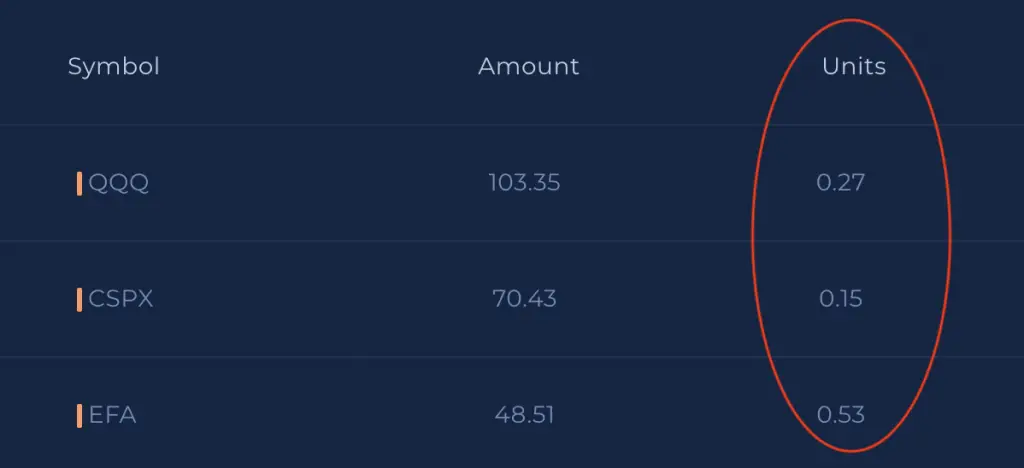
When you are able to invest in fractional shares, you are able to fully invest your funds. You do not need to worry about the price of each ETF!
However, there comes a risk if Syfe closes down like Smartly did in early 2020. Since your assets are co-mingled, you may not be able to sell off your fractional shares.
As such, you do not have full control over the fate of your assets!
Syfe has received substantial funding
However, you may not need to worry so much about Syfe closing down. Syfe managed to secure USD$18.6 million in their Series A funding.
They received SGD$5.2 million in their seed funding too.

This alone doesn’t mean that Syfe is truly profitable. However, it is a good indicator that investors are confident in this company.
As such, this should give you some confidence that Syfe is here to stay!
Performance
It is hard to compare the performances between these 2 portfolios since they are rather different.
Both have a different asset allocation, so the allocation may have a part to play in how much returns you’ll receive.
Moreover, the past returns can never be a good indicator of future returns. One portfolio that performs well now may not do so in the future.
Rather than looking at performance, you should be considering the investment strategy that is being used instead!
Minimum Sum
Both portfolios do not require you to have a minimum sum to start investing. This makes the portfolios very accessible even if you have a small sum!
You are able to invest with even $1 as Syfe invests in fractional shares.
Fees
Here are the fees that you’ll need to pay when you invest in either portfolio.
Both portfolios have the same pricing structure under Syfe
Both portfolios are managed by Syfe. As such, they will have the same management fees being charged:
| Total Amount Invested | Management Fee |
|---|---|
| < $20k | 0.65% |
| ≥ $20k and < $100k | 0.50% |
| ≥ $100k | 0.40% |
The management fees are pretty reasonable for a robo-advisor. It is slightly lower compared to StashAway’s fee of 0.8% for the first $25k invested with them.
You can read my comparison between Syfe Equity 100 and StashAway’s 36% portfolio to see which one is more suitable for you.
You will need to pay an expense ratio for the ETFs in both portfolios
On top of the management fees, you will need to pay for the expense ratios of the ETFs in both portfolios.
| ETF | Expense Ratio |
|---|---|
| QQQ | 0.20% |
| CSPX | 0.07% |
| EFA | 0.32% |
| XLP | 0.13% |
| XLV | 0.13% |
| XLU | 0.13% |
| IEMG | 0.13% |
| XLK | 0.13% |
| XLY | 0.08% |
| XLB | 0.13% |
| IJH | 0.05% |
| IJR | 0.06% |
| BNDX | 0.08% |
| TLT | 0.15% |
| IEF | 0.15% |
| AGG | 0.04% |
| GLD | 0.25% |
| RSP | 0.20% |
| XLI | 0.13% |
| XLF | 0.12% |
| XLE | 0.10% |
| SPY | 0.095% |
The expense ratios range from 0.05% to 0.32%.
As such, the total fees you incur with Syfe should be less than 1%.
You will incur withholding taxes with both portfolios
Equity 100 and Global ARI invest in ETFs that are domiciled in the US. The only exception is CSPX (Equity 100), which is Irish domiciled.
As such, you will incur a dividend withholding tax from these ETFs.
Here are the amount of taxes you will incur:
| CSPX | All other US ETFs | |
|---|---|---|
| Dividend Withholding Tax | 30% | 15% |
The dividends that you receive will be after these deductions have been made.
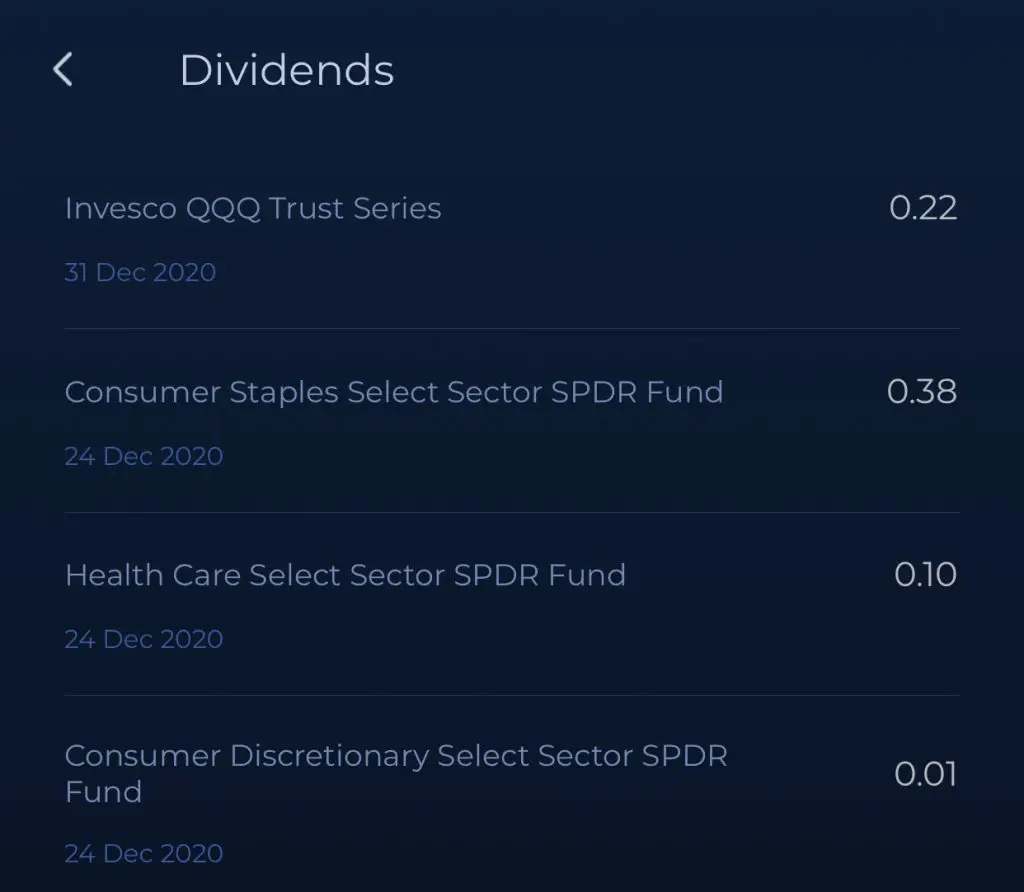
You may be subject to estate tax with both portfolios
Both portfolios mainly invests in US-domiciled ETFs. As such, you may be subject to an estate tax when you pass on.
An estate tax is a tax on the right to transfer your estate to someone else.
The only exception is CSPX, which is an Irish-domiciled ETF. Ireland does not have an estate tax, unless:
- You or the beneficiary are Irish citizens
- You own property in Ireland
Syfe claims that you should not be subject to any estate tax. This is because your assets are held in a co-mingled account. Since you are not investing as an individual, you should not be subject to this tax.
However, they have added a disclaimer, which shows that they are unable to give a definite answer!
You’ll need to convert your SGD to USD
Both portfolios invest in ETFs which are denominated in USD. As such, you will incur another cost which is the currency conversion fee.
This occurs when you convert your SGD to USD to invest in these ETFs.
When you decide to withdraw your funds from Equity 100, the exchange rate may slightly affect your returns.
Verdict
Here’s a breakdown of these 2 portfolios:
| Equity 100 | Global ARI | |
|---|---|---|
| Investing Strategy | Smart Beta | ARI |
| Assets | Equities | Equities Bonds Commodities |
| Fractional Shares | Yes | Yes |
| Minimum Sum | None | None |
| Dividend Withholding Tax | 15% for CSPX 30% for rest | 30% |
| Estate Tax | Maybe | Maybe |
| Fees | Management fee Expense ratio Currency exchange risk | Management fee Expense ratio Currency exchange risk |
So which portfolio should you choose?
Choose Global ARI if you prefer a balanced portfolio
Syfe’s Global ARI portfolio diversifies your funds across different asset classes.
Your portfolio may be rebalanced to ensure that you’re exposed to the same Downside Risk!
The Global ARI portfolio is similar to StashAway’s General Investing portfolio. Both of them believe that asset allocation is the most important.
If you prefer to have a diversified portfolio, Global ARI is more suitable for you.
Choose Equity 100 if you have a long time horizon
Syfe’s Equity 100 portfolio is extremely aggressive portfolio that invests entirely in equities. You will be guaranteed to earn a higher return on your investment.
However, you will need to stay invested for the long term (at least 5 years).
Stocks are extremely volatile, and they can go up and down very quickly. If you invest at the wrong time, the value of your stocks may plummet in the short run.
If you continue to stay invested in the market, the value of your stocks will go up. However, this will only occur in the long run!
You will need to have the willpower and not check your stocks everyday. This will reduce the chances of you making emotional decisions and selling your stocks at a loss!
If you can’t bear to see your portfolio’s value fluctuating a lot, Global ARI will be better suited for you.
Conclusion
Both portfolios offer unique ways to invest your money. The portfolio that you should choose depends on:
- Your time horizon
- The investment strategy that you agree with
- The type of asset allocation you wish to have
👉🏻 Referral Deals
If you are interested in signing up for any of the products mentioned above, you can check them out below!
Syfe Referral (Up to $30,000 SGD managed for free for 3 months)
If you are interested in signing up for Syfe, you can use the referral code ‘FIPHARM‘ when you are creating your account. You will have your first $30,000 invested with Syfe managed for free for your first 6 months.
You will be able to save up to $75 worth of fees!
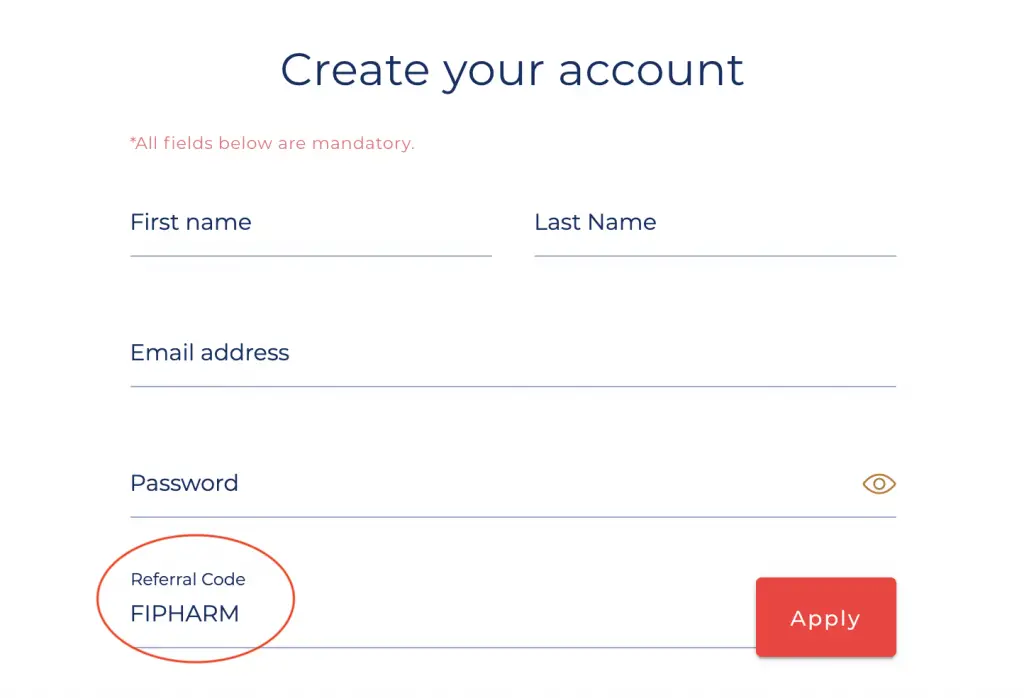
You can view more information about this referral program on Syfe’s website.

Do you like the content on this blog?
To receive the latest updates from my blog and personal finance in general, you can follow me on my Telegram channels (Personal Finance or Crypto) and Facebook.
Are you passionate about personal finance and want to earn some flexible income?

